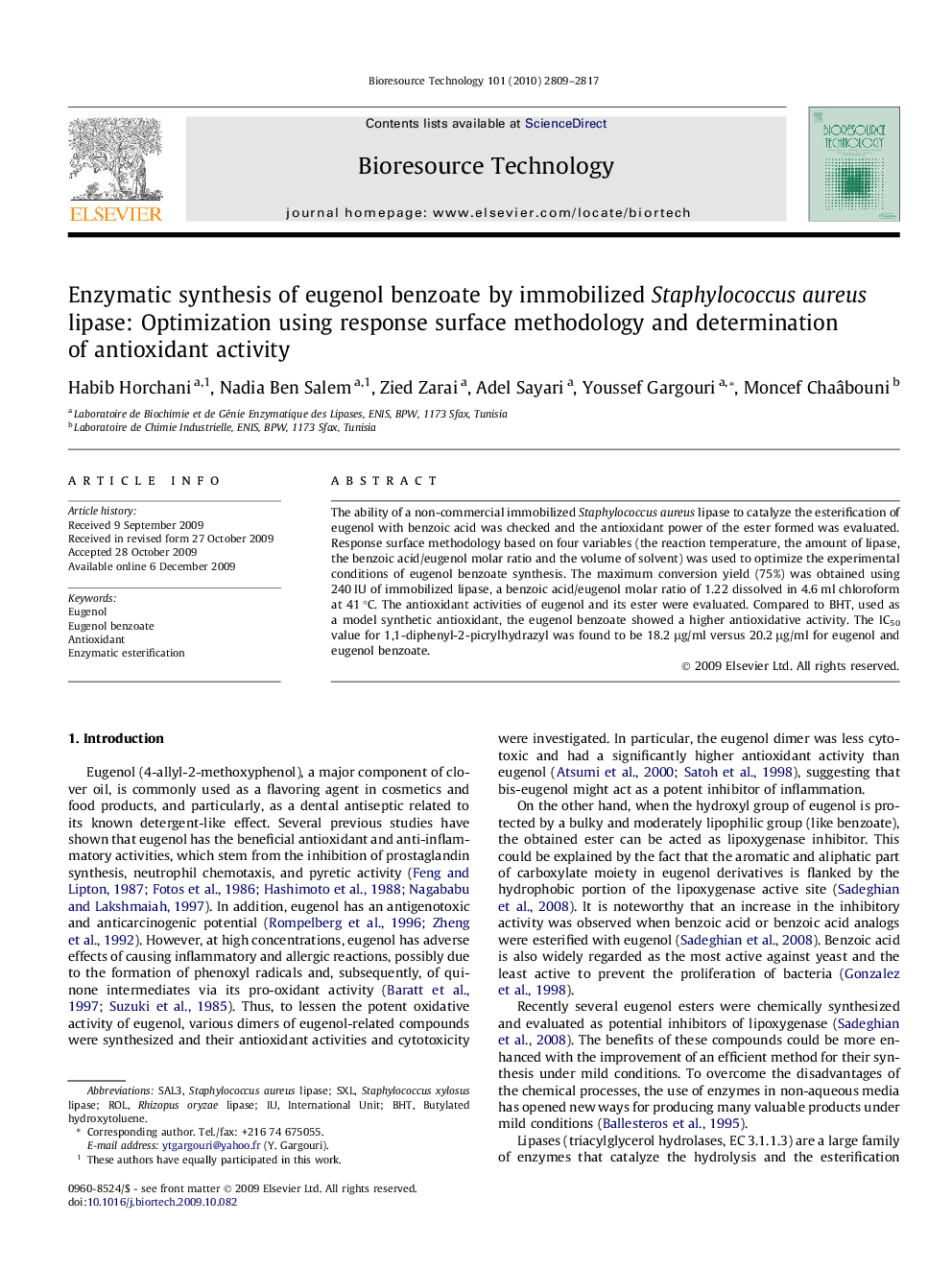| Article ID | Journal | Published Year | Pages | File Type |
|---|---|---|---|---|
| 683050 | Bioresource Technology | 2010 | 9 Pages |
Abstract
The ability of a non-commercial immobilized Staphylococcus aureus lipase to catalyze the esterification of eugenol with benzoic acid was checked and the antioxidant power of the ester formed was evaluated. Response surface methodology based on four variables (the reaction temperature, the amount of lipase, the benzoic acid/eugenol molar ratio and the volume of solvent) was used to optimize the experimental conditions of eugenol benzoate synthesis. The maximum conversion yield (75%) was obtained using 240 IU of immobilized lipase, a benzoic acid/eugenol molar ratio of 1.22 dissolved in 4.6 ml chloroform at 41 °C. The antioxidant activities of eugenol and its ester were evaluated. Compared to BHT, used as a model synthetic antioxidant, the eugenol benzoate showed a higher antioxidative activity. The IC50 value for 1,1-diphenyl-2-picrylhydrazyl was found to be 18.2 μg/ml versus 20.2 μg/ml for eugenol and eugenol benzoate.
Keywords
Related Topics
Physical Sciences and Engineering
Chemical Engineering
Process Chemistry and Technology
Authors
Habib Horchani, Nadia Ben Salem, Zied Zarai, Adel Sayari, Youssef Gargouri, Moncef Chaâbouni,
